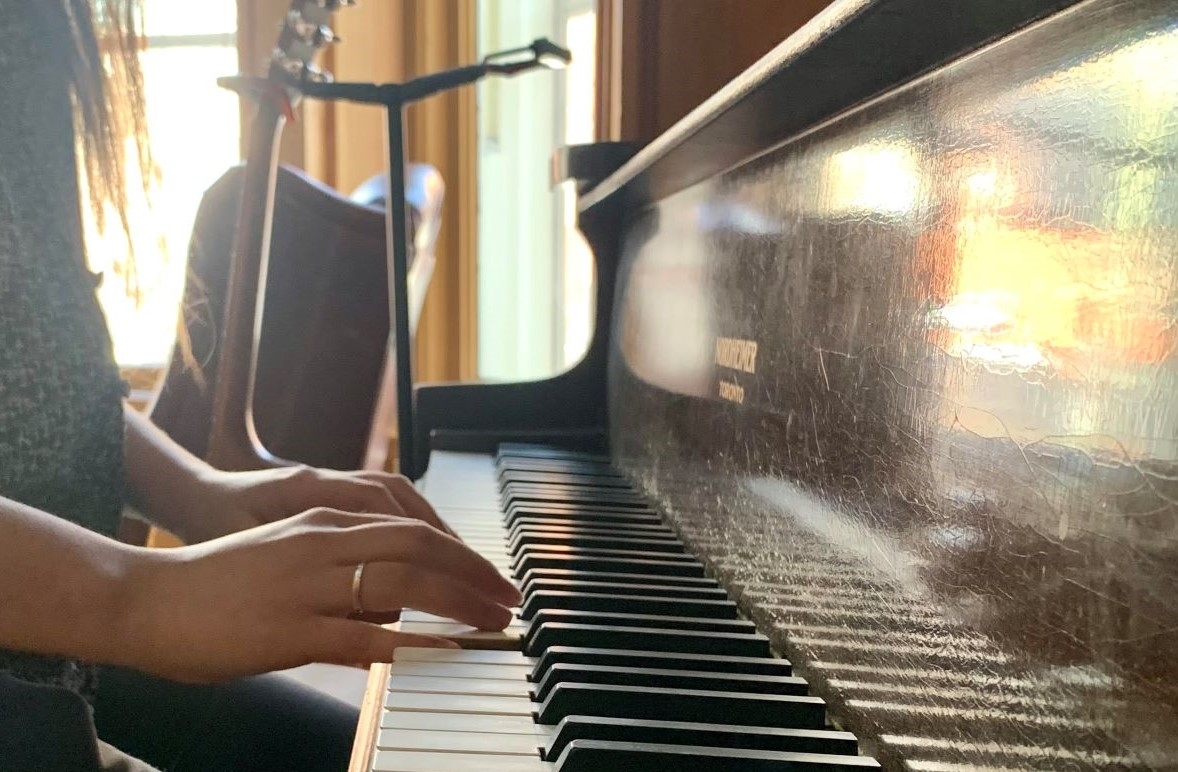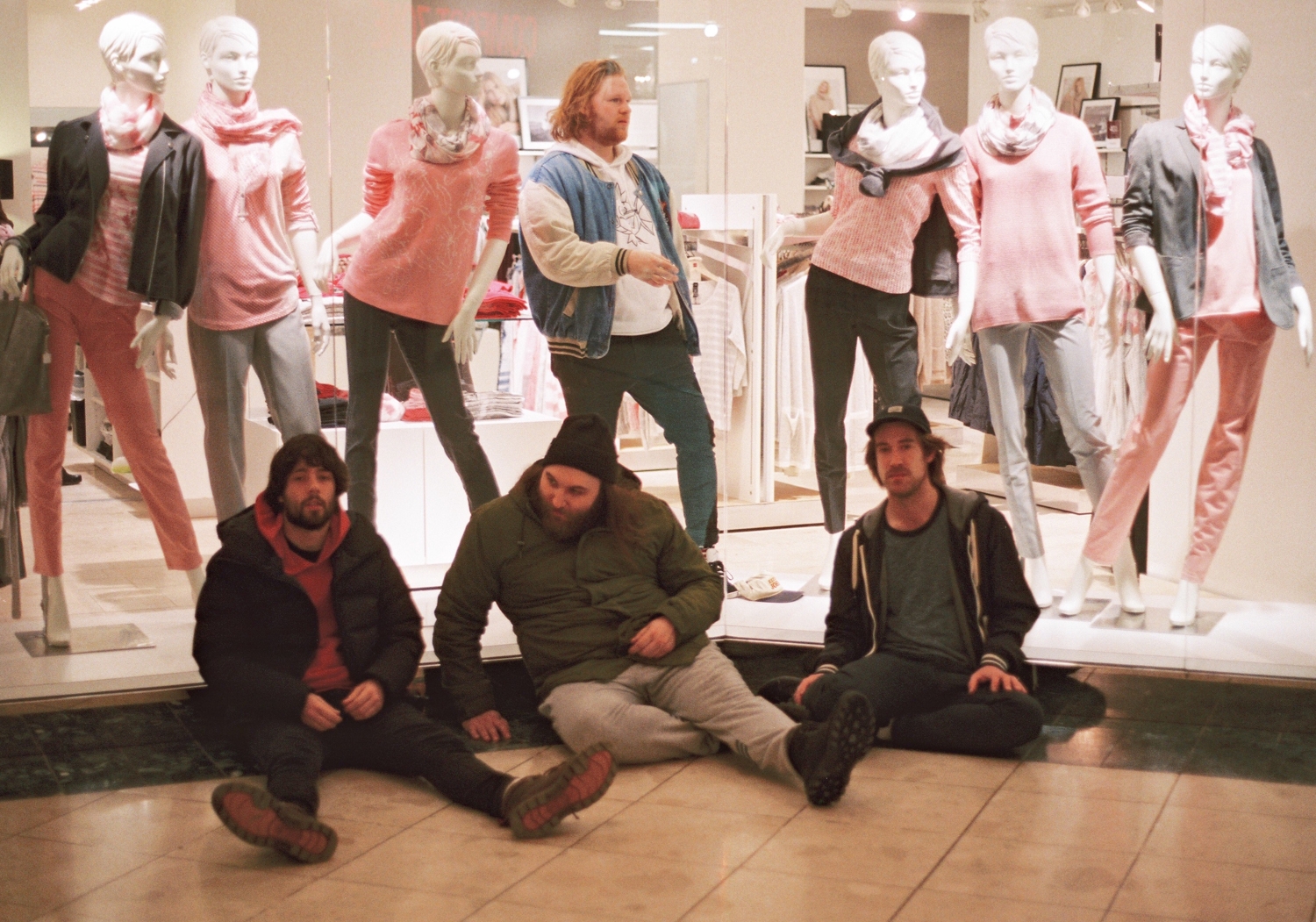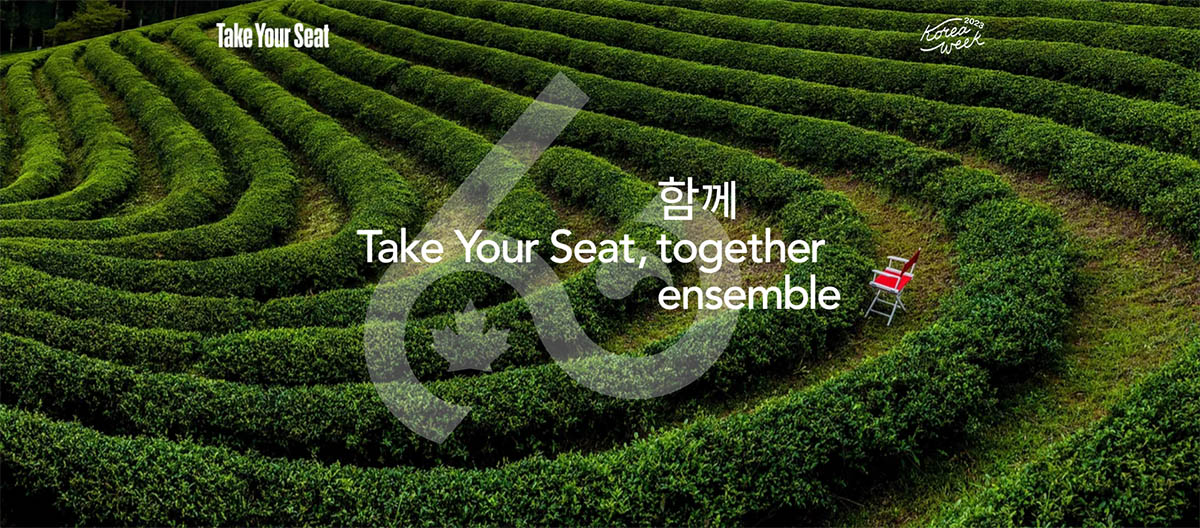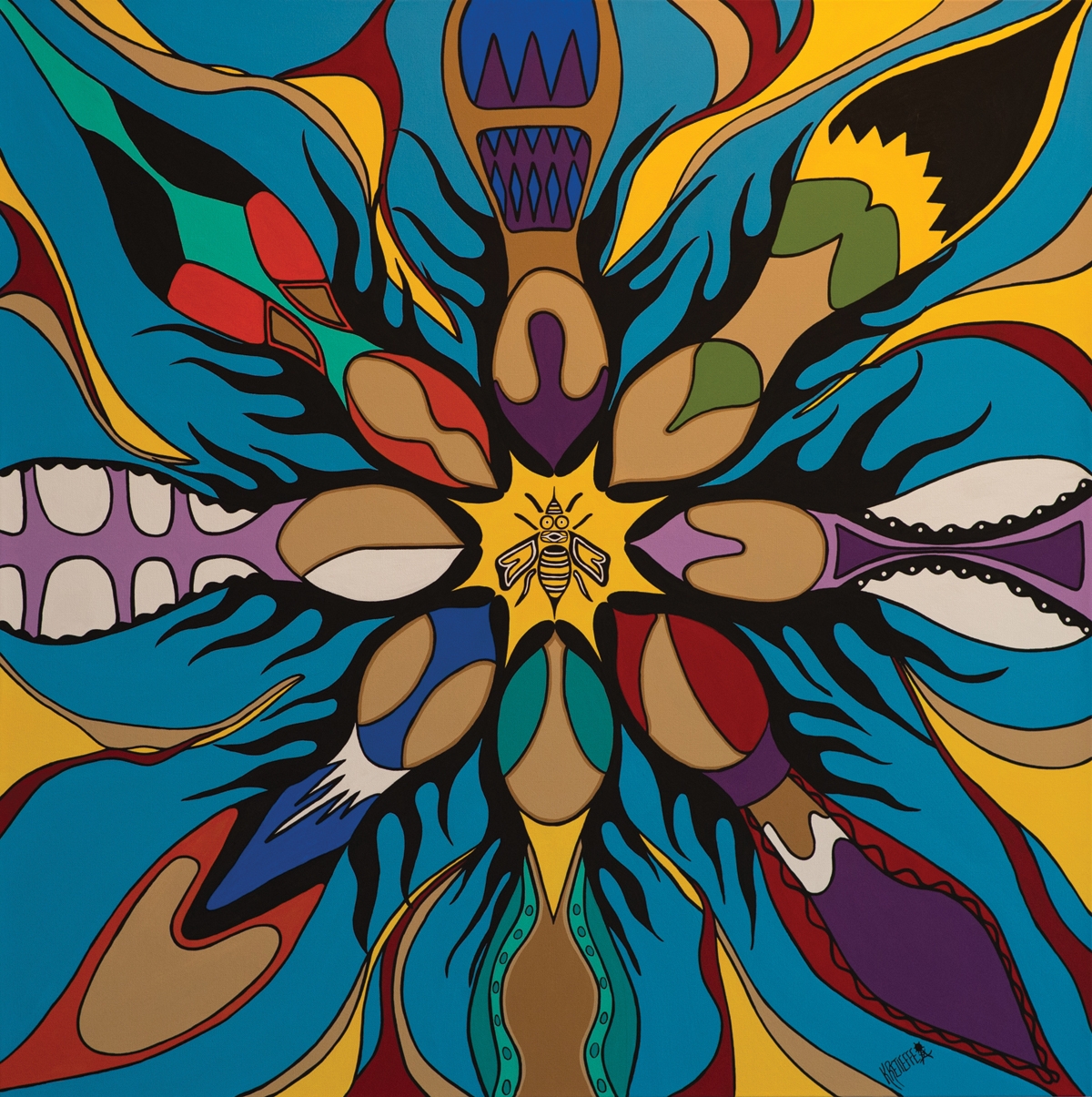
Krystle Retieffe: Artist on the Shore
For some, creating art is a compulsion, a much-needed outlet for self-expression. Nova Scotian artist Krystle Retieffe certainly sees herself in her work, though she believes its inspirations and implications are spiritual, pointing to something far greater than her.
“I know a lot of artists will go into a painting knowing what they’re going to paint, how to structure it,” said Retieffe. “That’s not how it works for me. Something will just come into me, a feeling about something. I’ll sit there blank for a moment, not knowing what I’m going to be painting. As I’m painting I can see it coming together.”
Retieffe’s artistry has unfolded slowly through her lifetime.
 She always had a desire to drawing and colour and as she grew older, Retieffe started working with fabrics and clay.
She always had a desire to drawing and colour and as she grew older, Retieffe started working with fabrics and clay.
She would create figurines and, being a natural sewer, would fashion outfits for her creations, finally painting on their faces and the stand that would hold them upright.
She noted how colour has always been important to her, and the clothing that she continues to make to this day, carrying on the tradition of her Mi’kmaq heritage, reflects this: rich sky blues and rosy reds, decorated with intricate designs and patterns all along the edges of the clothing.
But the moment that she started painting on canvas was truly transformative.
“Once I started to paint, the energy flow, what I was trying to express, came so clearly,” Retieffe explained.
Her discovery of painting came when she was working in Toronto.
She described the lifestyle as one of imbalance: she would work for 10-12 hours a day and found little inspiration in the sprawl of apartment buildings, the imposing skyscrapers, the crowded city streets.
Finally, she started painting. It alleviated her stress.
“There’s therapy to that,” she said. “It’s like I’m releasing something from past experiences . . . into the art.”
She then moved back to Nova Scotia immediately feeling a restoration in the balance of her life.
Criticism of modernity is a theme that can be found throughout Retieffe’s work. One painting that showcases this theme is Torn.
“In Torn, I have created an image of Water, who is saddened by our short-sightedness to the effects of industry and population density. She is approached by a group enlightened. They recognize their dependence on water and aim to help her heal.”
The aesthetics of Retieffe’s art reflects the dichotomy that she speaks of, a meditation on and a return to tradition; yet, the modern age remains inescapable.
Retieffe’s paintings both draw inspiration from her Mi’kmaq heritage and from modern art, similar to Canadian artist Alex Janvier.

Both of her parents’ families are from Qalipu First Nation. While it has always played a vital role in her work, she is quick to point out that it is something that is present in every aspect of her life.
For instance, she is Keeper of the Drum for Women of the Shore, a group based on Nova Scotia’s South Shore, representing the musical side of her artistry.
She used her artistic talents to design the group’s skirts, capes and drum bag, with each drummer’s regalia customized to reflect their values, personality and spirituality.
Social issues from an Indigenous perspective are reflected in a majority of Retieffe’s work, and feminism prevails in many of her paintings, specifically Water is Life and Water and Life are One. As can be deciphered from the titles, Retieffe draws a strong connection between womanhood and nature.
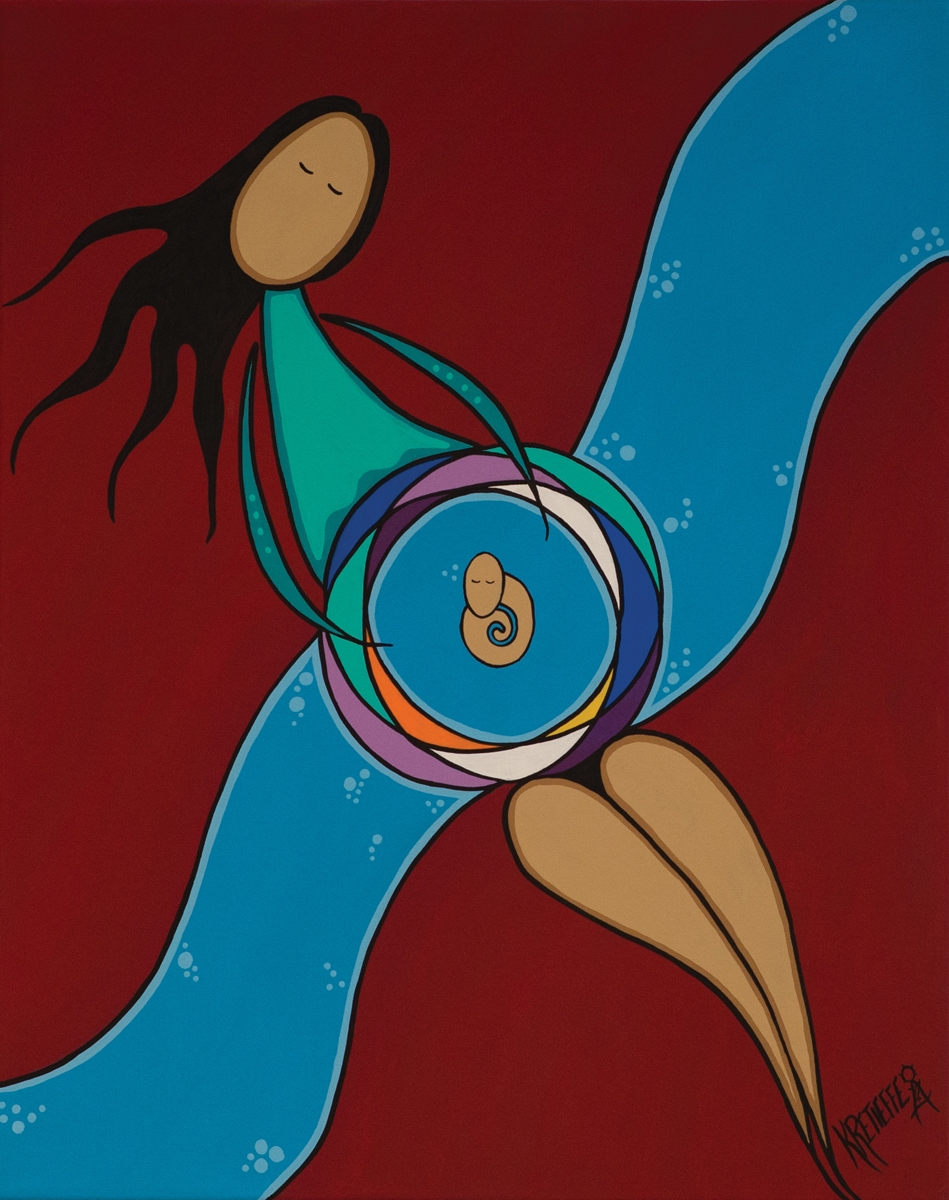 “I see Earth as feminine in that it bears life and provides us with sustenance. Some of my pieces have been inspired by our collective abuse or lack of respect for Mother Earth.”
“I see Earth as feminine in that it bears life and provides us with sustenance. Some of my pieces have been inspired by our collective abuse or lack of respect for Mother Earth.”
Just as her Indigenous identity and spirituality are present in her art, her interest in helping women exists outside her art as well.
“What I do outside of painting is focus on women and the healing of women. Women are the mothers of our children, so the healing has to start with them in order for them to raise healthy adults for our next generation. Today, it’s no longer acceptance; it’s competition. It’s so important to me that in the women’s circles and gatherings that I do, that we are all accepting of one another, that there is no longer competition.”
Retieffe spoke about the empowering and wall-breaking nature of Women of the Shore’s events.
“As women drumming on a big drum, we have been widely welcomed as a refreshing experience, (though) there is some contrasting lateral violence that comes from some people’s belief that only men can perform on a big drum. This misogyny is far outweighed by the positive influence we have had and the healing that we have encouraged.”
For Retieffe, the key to being a successful artist is to be unapologetically one’s-self.
Visit Ottawa’s Alpha Art Gallery to see Krystle Retieffe’s work.
krystleretieffestudios.com


